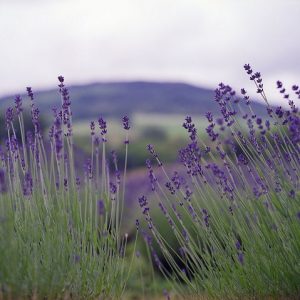 Aromatherapy is an effective and simple stress resiliency tool to use in your business and personal life. This wonderful tool has been a part of my personal holistic regimen for many years, and I have enjoyed using aromatherapy with some of my clients and my family.
Aromatherapy is an effective and simple stress resiliency tool to use in your business and personal life. This wonderful tool has been a part of my personal holistic regimen for many years, and I have enjoyed using aromatherapy with some of my clients and my family.
Aromatherapy is the therapeutic use of essential oils (EOs). EOs are distilled and expressed from the flowers, leaves, roots, and twigs of a plant. Distillation is the most common method of extracting essential oils and is a long process whereby the final product is the pure essence of the plant. This pure essence is 100 times stronger than the plant from which it originated. The genus and species of a plant are an important consideration because of each plant’s unique chemical composition; the unique qualities of each plant dictate its therapeutic effects.
HOW DOES AROMATHERAPY WORK?
When applied to the skin, an EO is absorbed into the dermis and then directly into the blood system. When inhaled, the aromatic molecules are absorbed via the nose into the olfactory part of the brain and into the limbic system where memory, emotions and stress response are located. This explains why a memory can be triggered by a smell, and an emotional connection tied to that memory.
The advantage of using EOs lies in their effects on the limbic system facilitating a decrease in anxiety, stress, depression, and insomnia. I recommend buying a small battery operated or electric diffuser to use in your office or make your own portable inhaler and wick to carry around with you. These can be purchased online from several aromatherapy companies. Add a few drops of lavender oil to a diffuser or inhaler and re-supply as needed. Consider peppermint oil when you need to increase your attention span as peppermint is a safe stimulant. Use Essential Oils with children, infants, and the elderly only with professional guidance.
THE HISTORY OF AROMATHERAPY
Aromatherapy dates back to ancient times when EOs were used by the Egyptians, Romans, and throughout India. Renee Maurice Gottefosse, a chemist in 20th century France, is noted as being the Father of Aromatherapy. Gottefosse, a perfumer, was working in his lab when he burned his hand and placed it in a vat of lavender oil. He noted a therapeutic effect on his skin: decreased scarring and pain. He began researching the properties of plants, and ultimately wrote a book entitled Aromatherapie in 1928. This was groundbreaking. Aromatherapie offered new insights into the use of topical EOs for dermatological conditions.
Dr. Jean Valent, a French medical doctor, was inspired by Gottefosse and began researching the use of EOs on wounds during the war when supplies were low in the battlefields. In the 1950’s, Marie Maury, a nurse and biochemist, contributed to the growing research with EOs effectiveness with massage and holistic applications. Over the last eighty five years, aromatherapy applications were discovered for infection, wounds, and psychological conditions. Aromatherapy is commonly used in the nursing and medical fields in many European countries today.
APPLICATION AND COMMON USES OF ESSENTIAL OILS?
The most common methods of application of aromatherapy are topical and inhalation. When starting your day you can apply essential oils or simply use a diffuser in your office. When applying EOs to the skin, a carrier oil is needed to absorb the potency and to protect the skin. Some essential oils can be applied directly to the skin such as True Lavender and Tea Tree oils. Caution, however, should be used when applying and using oils – start with the least therapeutic amount.
According to the leading aromatherapists, Nerys Purchon and Lora Cantele, this amount is 1.5% dilution or 3 drops per 2 tsp/10 ml of carrier oil. The most common carrier oils are grape seed or sweet almond oil. Sometimes specific oils may be recommended for special blends. Essential oils may also be added to creams and bases such as Aloe Vera.
The most common types of EO’s that are used include True Lavender, Tea Tree, Roman Chamomile, Lemon, and Geranium. Lavender is the most popular, and one of the safest oils to use. Common uses include stress, insomnia, depression, burns, and insect bites. Many essential oils have antimicrobial properties, and therefore may be used to clean counter tops, applied to the skin to decrease irritation, redness and to prevent infection. When purchasing EOs, only consider organic oils. They are less burdened by toxins that may be found on plants that are sprayed.
USES OF ESSENTIAL OILS
The following are some of the uses for Essential Oils:
- Reduce stress/anxiety
- Promotes sleep
- Reduce depression
- Increases circulation of the skin
- Healing for burns and skin irritation
- Alleviates sore throats
- Reduce pain
- Decrease scarring of skin
- Improves environmental ambiance
- Treatment of sinus and congestion symptoms
- Cleans and deodorizes environment
- Insect repellent
As you experiment and find your favorite essential oils you will discover that aromatherapy may promote health, stress resiliency and increase your attention and focus at work. Aromatherapy as part of your business environment can add that extra creative touch to your work activities. We can all use that!
Resources for learning more:
The Complete Aromatherapy and Essential Oil Handbook for Everyday Wellness by Nerrys Purchon and Lora Cantele.
The Aromatherapy Workbook by Marcel Lavabre
Websites recommended:
http://naha.org/
https://nccih.nih.gov/health/aromatherapy
Reference for this article:
Nerys Purchon and Lora Cantele, 2014, Practicalities, Tracy Bordian (Ed.), The Complete Aromatherapy and Essential Oils Handbook for Everyday Wellness (p.16, pp. 450-452), Toronto, Ontario: Robert Rose Inc.
For more information or to share comments, contact fran@franmedinacoaching.com

